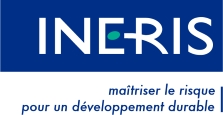BPS is present in some materials as a monomer, i.e. part of the polymer chain.
The main materials concerned are:
• BPS-based epoxy resins: coatings in the field of food packaging (tins, drinks cans, etc), automotive and marine industry;
paints;
laminated printed circuits (flexible);
encapsulated semiconductors and structural composites;
lithographic inks and light-sensitive resins for the electronic industry (this both applications are growing).
• Polycarbonate (*): dishes for canteen kitchens; milk bottles; chocolate molds; water containers; safety glazing; laboratory instruments; medical instruments; housings for household appliances; electrical boxes; broadcasters lighting lamps; CD / DVD, etc.
• Polyethersulfone (*): food industry; hot water systems; dishes for children and baby bottles; electricity and electronics (coils, brush holder, printed and integrated circuits, connectors, fuel cells); automotive industry (parts of carburetors, bearing cages); textiles, lighting, optics, medical devices; aviation, aerospace.
More discreetly, other materials are also concerned:
• Polyester resins based on BPS as co-monomer: electricity and electronics, automotive industry, packaging.
• Phenolic resins based on BPS as co-monomer: electricity and electronics, automotive industry, household appliances, aerospace and aviation, and packaging.
On the other hand, BPS can specifically be used as additive for others applications:
• As additive for the coating of thermal papers (receipts of cash dispensers and receipts);
• As modifier for leather, fibers, polymers and as hardener for epoxy resins.
Although no studies have been conducted to date to confirm this hypothesis, BPS could also be present in textile articles.
(*) This material may be produced from others bisphenols than bisphenol S, current uses of this material may nevertheless indicate a potential presence of BPS.

